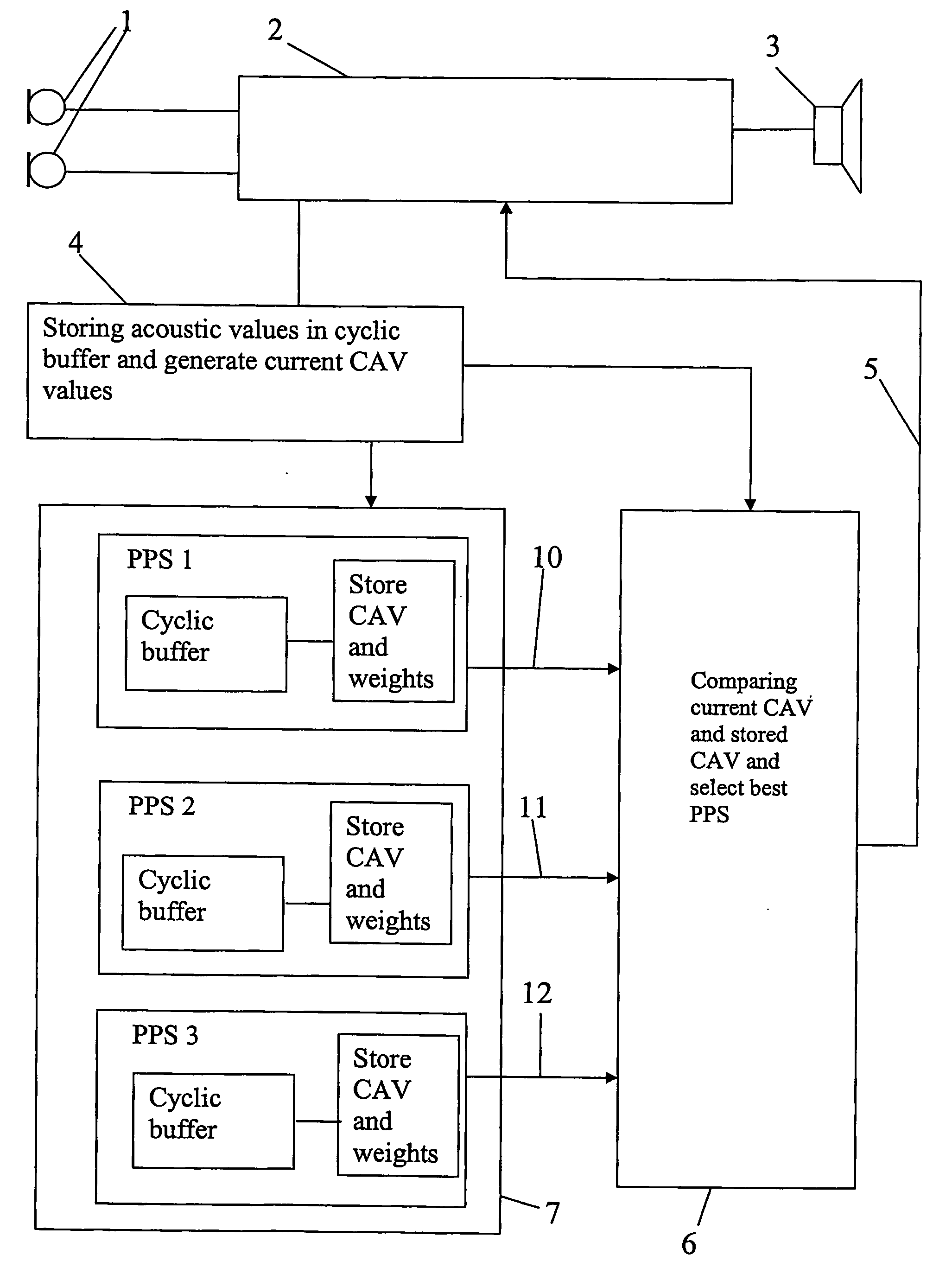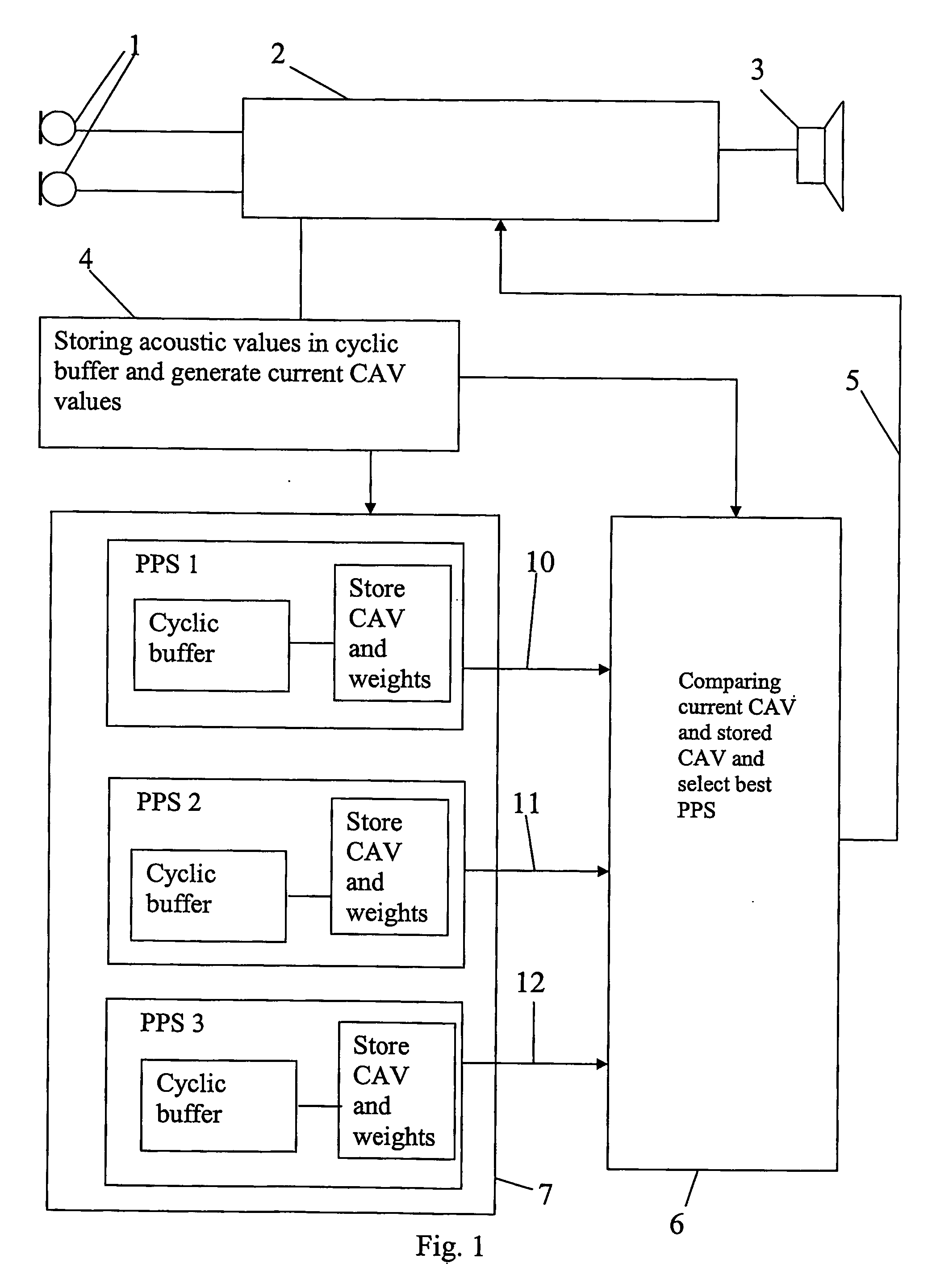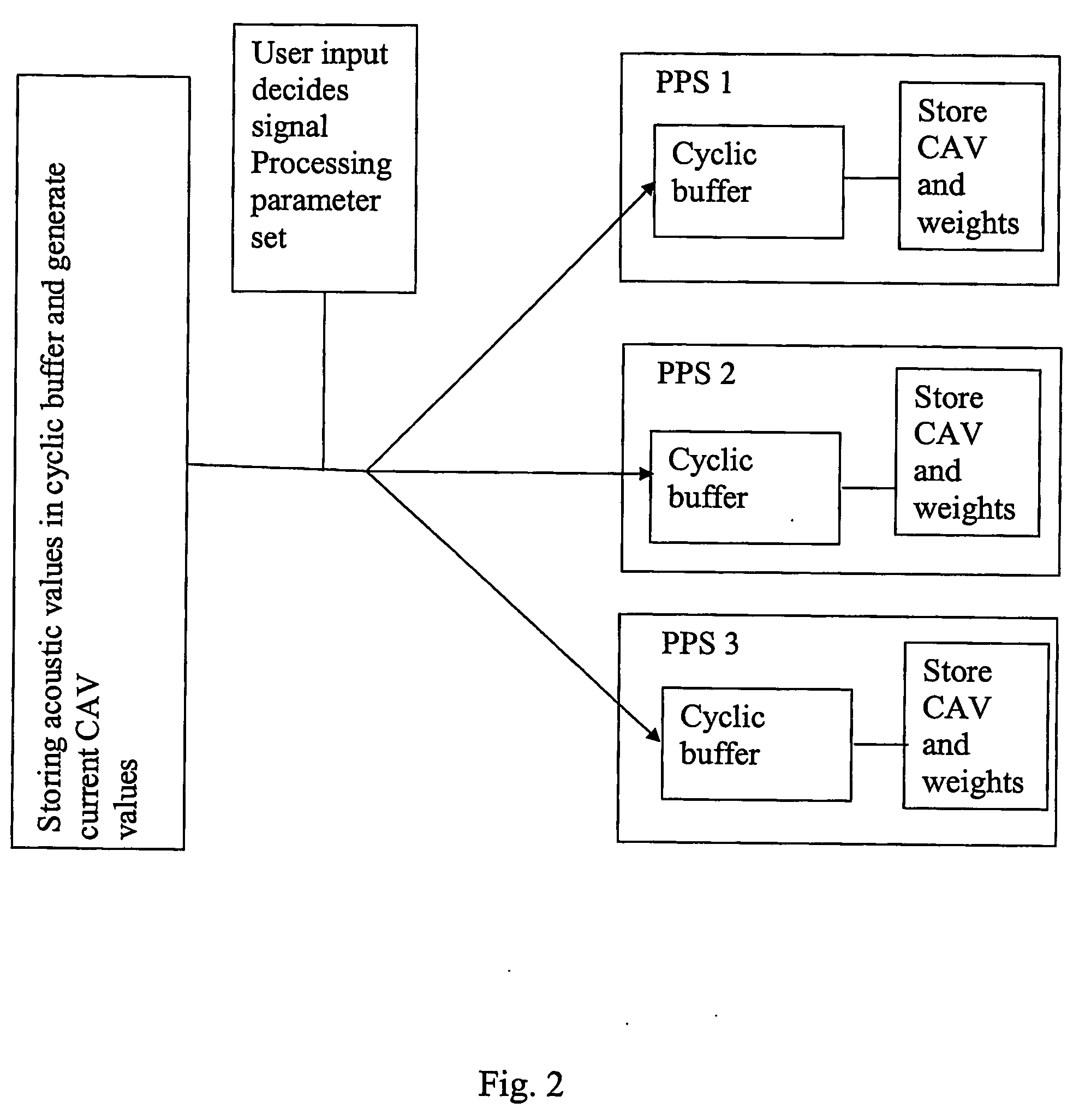Hearing device and method for choosing a program in a multi program hearing device
a hearing device and multi-programming technology, applied in the direction of deaf-aid sets, electric devices, etc., can solve the problems of high risk of confusion and may take some time to act, and achieve the effect of convenient and straightforward us
- Summary
- Abstract
- Description
- Claims
- Application Information
AI Technical Summary
Benefits of technology
Problems solved by technology
Method used
Image
Examples
Embodiment Construction
[0041] The hearing device in FIG. 1 has two microphones 1, a signal processing unit 2, and a receiver 3. The signal processing unit 2 provides an output signal to a receiver 3, which supplies an audio output to the user of the hearing aid. The hearing aid has two different operational modes, namely a manual / learning mode and an automatic mode. In both manual mode and automatic mode acoustic values are calculated from the input signal, stored in a cyclic buffer and from the cyclic buffer an average is extracted and stored for further use. This is illustrated by FIG. 4. The averaging which is proposed according to the current example of the invention is that the most frequently occurring acoustic values gets loaded into the memory for further use, but other averaging schemes could be used. FIGS. 5 and 6 shows an example of the content of the cyclic buffer with the acoustic values representing single point measurements of the acoustic environment. The most frequent occurring value is s...
PUM
 Login to View More
Login to View More Abstract
Description
Claims
Application Information
 Login to View More
Login to View More - R&D
- Intellectual Property
- Life Sciences
- Materials
- Tech Scout
- Unparalleled Data Quality
- Higher Quality Content
- 60% Fewer Hallucinations
Browse by: Latest US Patents, China's latest patents, Technical Efficacy Thesaurus, Application Domain, Technology Topic, Popular Technical Reports.
© 2025 PatSnap. All rights reserved.Legal|Privacy policy|Modern Slavery Act Transparency Statement|Sitemap|About US| Contact US: help@patsnap.com



